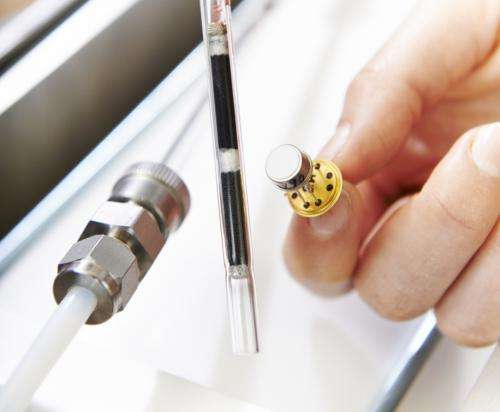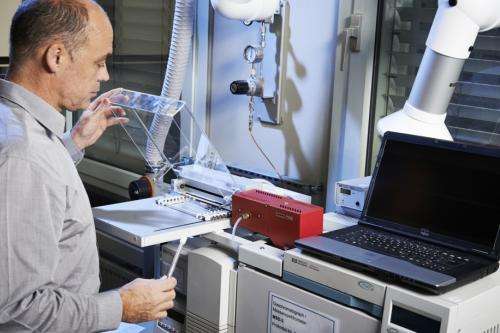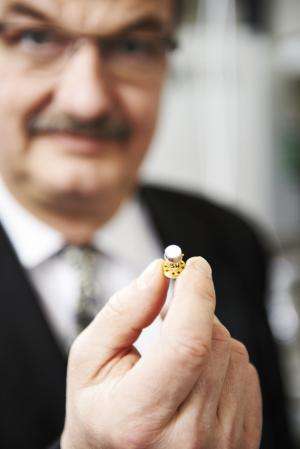Detecting cancer through breath analysis

Although it is possible to detect diseases by studying a person's breath, this is by no means an easy task. However, scientists in the New Technology Field for Chemical and Optical Systems at Siemens Corporate Technology have become specialists in professionally capturing people's breath and analyzing the molecules it contains. Their goal is to detect diseases such as lung cancer merely on the basis of the breath's composition, and to do so when the illness is still at an early stage and therefore easier to treat.
Specialists from Siemens want to develop a sensor that can independently detect anomalies in a person's breath that could indicate an illness. In the first step of this process, researchers have developed a sensor for detecting asthma. They are now going a big step further by developing a system for the early detection of lung cancer. "We first had to find out which molecules the sensor has to react to so that it can make a definite diagnosis of lung cancer," explains Prof. Maximilian Fleischer, who is a driving force behind sensor research at Siemens Corporate Technology (CT). It is now clear that a whole range of molecules need to be detected for such a diagnosis.
The researchers designed and developed a special device that was then tested at Erlangen University Hospital, where patients suffering from various stages of lung cancer are treated. The benefits would be especially big if this disease could be diagnosed as early as possible, as treatment is then much more effective than when the disease has progressed to an advanced stage.
Analyzing Hundreds of Molecules
Hospital staff used the new device to take breath samples from around 50 cancer patients. The samples were collected in special tubes, which were then sent to Munich, where Siemens researchers broke the breath down to the molecular level and analyzed it. Using a program that was specifically developed for this purpose, the researchers discovered correlations between the disease and a number of different molecules. The program was needed because it would have taken too long to manually analyze each sample for the presence of hundreds of molecules and document the relevant hits. In their efforts to analyze the breath samples, the sensor researchers received help from Corporte Technology's Analytics team. This research group, which is located on the same Munich campus as the sensor specialists, identified the various substances and contaminants in the samples.

"All of this foundational work has rounded out our knowledge of molecules in the breath of lung cancer patients and what significance these molecules have," says Fleischer. CT is forming additional research partnerships, because the results still have to be validated in a larger study involving far more samples. The researchers want to develop a sensor that can diagnose whether a patient suffers from lung cancer purely on the basis of the breath's composition. Now that the groundwork has been laid, Fleischer thinks it is only a matter of time before the research team creates such a sensor. In other words, business as usual. "We gained extensive experience during our work on the asthma sensor, enabling us to develop a prototype. We can now build on these results," says Fleischer.

Patients have to blow into the asthma detection device so that it can measure the nitrogen monoxide (NO) concentration in their breath. If the result exceeds a certain value, it means the patient has not been sufficiently treated with medication and is therefore likely to suffer an asthma attack. The sensor is equipped with a microchip. This chip is coated with a special substance to which the molecules to be measured in the breath sample selectively adhere.
The Goal: Breath Samples during Routine Checkups
The use of sensors to detect diseases is still in its infancy despite all of the technological advances and initial successes. However, researchers, medical professionals, and healthcare managers have high hopes for these projects. Should such sensors reliably detect a wide range of different diseases one day, they could be mass produced and used without greatly inconveniencing patients. Patients would merely have to give a breath sample, which could be taken during routine checkups at their GPs, for example. If the sensor detected any anomalies, a more in-depth diagnosis would be made with the help of a computer tomograph, for example. A glance into Fleischer's lab shows that this vision will become a reality in the not-too-distant future.













